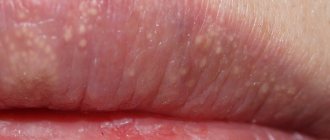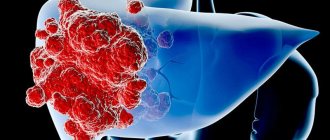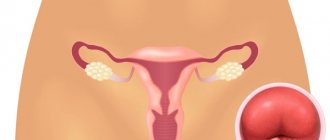European Oncology Clinic is Russian center of competence diagnosis, treatment of melanoma, and therapy of disseminated melanoma at stage 4. The knowledge and skills that specialists from the European Oncology Clinic have acquired over many years of practice are regularly presented at international conferences.
At one of them - INTERACTIVE WORKSHOP ON IMMUNOTHERAPY IN MELANOMA AND LUNG CANCER , held in Israel, doctors from the European Oncology Clinic presented their report on the topic of immunotherapy. Apart from the European Oncology Clinic, there were no participants from Russia at the conference.
Treatment is carried out in cooperation with foreign partners. This allows doctors at the European Oncology Clinic, if necessary, to prescribe treatment with drugs that are available for use only in a few countries around the world and offer patients participation in clinical trials of the latest drugs.
Book a consultation around the clock +7+7+78
Depending on the appearance and growth pattern, there are several types of skin melanoma:
- Superficial spreading melanoma
occurs in approximately 60% of cases. Such tumors can remain in the radial growth phase for a long time, for several years, that is, grow in breadth without growing into the deeper layers of tissue. Metastasis occurs extremely rarely. But, sooner or later, the vertical growth phase will begin, and the tendency of melanoma to metastasize will increase sharply. - The nodular form
looks like a nodule that rises above the surface of the skin. Her growth is much more aggressive. - Lentigo maligna melanoma
appears as a spot on the skin with jagged, fuzzy edges. This is the most favorable type. Like superficial spreading melanoma, it can remain in the radial growth phase for a long time—up to 10–20 years—and only then begins to actively grow deeper and metastasize. - The acral-lentiginous form
most often appears as a spot on the palm or foot, in the area of the nail bed. It is similar to superficial spreading melanoma, but behaves more aggressively and metastasizes earlier. Due to the “inconvenient” location, a person may not notice this tumor for a long time and not see a doctor.
Sign 3 - “the appearance of asymmetry or irregularity in the outlines of the nevus.”
If the nevus has become asymmetrical along two axes, its entire edge has become scalloped
or begins to resemble
a coastline
on a geographical map - it’s time to go to the oncologist.
However, if you look closely at any mole on the body with a magnifying glass, even with low power, you will not find perfect circles or straight lines. In no nevus is the pigment distributed 100% evenly.
You can read more about moles with uneven edges here
Methods of therapy
Treatment of melanoma directly depends on the stage of development of the disease:
- Stage zero – surgical excision of the tumor with tissue capture around the lesion for 1 cm.
- First stage. A biopsy is first performed, after which the tumor is removed, covering 2 cm of tissue. If there are signs of metastases in the lymph nodes, they are also removed.
- At the third stage, chemotherapy, boosting immunity and tumor removal are indicated. The capture of healthy tissue during resection of melanoma reaches 3 cm. A mandatory continuation is the removal of lymph nodes and subsequent chemotherapy.
- The fourth stage does not have a standard treatment regimen; usually therapy includes the complex effects of chemicals and radiation medicine.
Chemotherapy
Treatment of melanoma involves the use of several drugs at once, the most common among them:
- Bleomycin,
- Ronkoleikin,
- Cisplatin,
- Reaferon,
- Vincristine.
If there is a disseminated form, the drug Mustoforan is used, indicated for brain metastases. In standard therapy, Roncoleukin is used intravenously at a dose of 1.5 mg in combination with other drugs. The average duration of chemotherapy is 6 cycles at 4-week intervals.
Radiation therapy
This method of exposure is additional and is used in combination with other therapeutic measures. Independent use of radiation treatment is possible only if the patient refuses surgery.
Cancer cells are noticeably resistant to ionization, so this method is used as a restorative therapy after surgery or in combination with chemotherapy.
Operation
The method of surgical treatment involves wide excision of the tumor involving nearby tissues. The main goal of surgery is to prevent metastases. The defect that appears as a result of surgery is eliminated using plastic surgery.
The area of the removed area depends on the initial size of the tumor. For melanoma of the nodular type or superficial neoplasm, the distance from the edge of the lesion is no more than 1-2 cm. Excision is carried out in the shape of an ellipse, and the block of excised tissue takes on an ellipsoidal shape.
Surgery is contraindicated for lentigo melanoma. This type of cancerous skin lesion is subjected to laser destruction or exposure using cryogenic technologies using low temperatures.
Signs 6 and 7 - “ulceration of the epidermis over the nevus”, “wetting on the surface of the nevus”
In my experience, ulceration appears mainly in melanomas in late stages, when there is no longer any doubt about the diagnosis. This symptom is more relevant, in my opinion, for basal cell skin cancer (basal cell carcinoma). This disease is much less formidable; people die from it extremely rarely.
For a benign mole, an ulcerated surface and weeping are also possible - immediately after trauma:
What to do if you injured a mole, is it really dangerous - read here
Disease statistics
Skin cancer is the most common cancer in the United States and Australia. In other countries, this group of diseases is in the top three. Melanoma is the leader among skin cancers in terms of the number of deaths. Every hour in the world one person dies from this disease. In 2013, there were 77 thousand confirmed melanoma diagnoses and 9,500 deaths from it. The share of melanoma in the structure of cancer is only 2.3%, while at the same time being the cause of 75% of deaths from skin cancer.
This form of cancer is not exclusively skin cancer and can affect the eyes, scalp, nails, feet, and oral mucosa (regardless of gender and age). The risk of developing melanoma among Caucasians is 2%, 0.5% among Europeans and 0.1% among Africans.
Sign 8 - “bleeding from the surface of the nevus.”
Yes, indeed, one of the common features of melanoma is spontaneous bleeding without previous trauma to the mole.
Even this sign alone
will make any oncologist seriously doubt the benignity of the mole.
However, in my practice several times I came across a rather rare type of skin tumor - pyogenic granuloma. These formations appear very quickly, bleed, however, they are 100% benign:
Epidemiology
According to WHO, in 2000, more than 200,000 cases of melanoma were diagnosed worldwide and 65,000 melanoma-related deaths occurred.
In the period from 1998 to 2008, the increase in the incidence of melanoma in the Russian Federation was 38.17%, and the standardized incidence rate increased from 4.04 to 5.46 per 100 thousand population. In 2008, the number of new cases of skin melanoma in the Russian Federation amounted to 7,744 people. The mortality rate from melanoma in the Russian Federation in 2008 was 3159 people, and the standardized mortality rate was 2.23 people per 100 thousand population. The average age of melanoma patients diagnosed for the first time in their lives in 2008 in the Russian Federation was 58.7 years. The highest incidence was observed at the age of 75-84 years.
In 2005, the United States recorded 59,580 new cases of melanoma and 7,700 deaths due to this tumor. The SEER (The Surveillance, Epidemiology, and End Results) program notes that the incidence of melanoma increased 600% from 1950 to 2000.
Sign 9 - “hair loss on the surface of the nevus.”
This sign may indicate that the mole has become malignant. If the mole is 5 mm or more and several hairs have disappeared from its surface at the same time and they do not appear. Moreover, if the same mole began to grow and doubled in size in 2 months, these are already 2 alarming signals at the same time and such a mole should be shown to an oncologist without delay. In addition, I should note that in my practice once
I encountered a melanoma, the surface of which was covered with hair.
At the same time, there are a huge number of moles, the surface of which is not covered with hair and at the same time they are completely benign. People also often panic if one hair grew from a mole and it suddenly fell out. Please do not despair - it should appear no later than in 2-3 weeks.
I wrote this article about hair on moles.
What does melanoma look like in a photo?
- Nodal.
Nodular (diminutive from the Latin “nodus” - node) formation is less common (14-30%). The most aggressive form. Melanoma cancer is characterized by rapid growth (from 4 months to 2 years). Develops on objectively unchanged skin without visible damage or from a pigmented nevus. Growth is vertical. The color is uniform, dark blue or black. In rare cases, such a tumor, which resembles a nodule or papule, may not be pigmented.
- Malignant lentigo.
The disease affects older people (after 60 years) and is detected in 5-10% of cases. Open areas of the skin (face, neck, hands) are covered by dark blue, dark or light brown nodules with a diameter of up to 3 mm. Slow radial growth of the tumor in the upper parts of the skin (20 years or longer before vertical invasion into the deep layers of the dermis) can involve the hair follicles.
Sign 10 - “inflammation in the area of the nevus and surrounding tissues”
Redness and swelling of the tissue around the mole may be a consequence of melanoma cells growing into the surrounding skin.
However, it must be remembered that in case of inflammation of the sebaceous gland, which is located under or next to the mole, “pimples” may form. If such a focus of inflammation is located next to a mole, you will see symptoms of inflammation - redness and soreness. How to distinguish a “pimple” from a sign of melanoma? It’s very simple - wait 1-2 weeks and it should go away on its own.
Inflammation of a mole is a common occurrence. I analyze it in this article
Treatment
- Treatment of local local injuries consists of timely detection and surgical intervention. Removal is most often performed under infiltration anesthesia. For excision of large formations, general anesthesia may be used. In addition to malignant tumors, there are a number of pre-melanoma diseases in which the surgical method is indicated.
- Local-regional damage. Treatment includes wide-area excision and lymph node dissection of the affected lymph nodes. Types of unresectable, transiently metastatic tumors are subjected to isolated regional chemoperfusion. In certain cases, a combined approach has proven itself to be effective, with additional therapy that stimulates the immune system.
- Treatment of distant metastases is performed with monomodal chemotherapy. Certain types of mutations are targeted by targeted drugs.
Sign 11 - “peeling on the surface of the nevus with the formation of dry crusts”
Yes, the surface of melanoma (or basal cell carcinoma) may be covered with crusts that form due to weeping or bleeding. And this is a truly alarming sign.
At the same time, there is another type of neoplasm - keratopapillomas (keratomas). Crusts regularly appear on the surface of such formations, which then fall off.
Causes
- Prolonged exposure to the sun. Exposure to ultraviolet radiation, including solariums, can cause the development of melanoma. Excessive sun exposure in childhood significantly increases the risk of disease. Residents of regions with increased solar activity (Florida, Hawaii and Australia) are more susceptible to developing skin cancer.
Burns caused by prolonged exposure to the sun more than double the risk of developing melanoma. A visit to the solarium increases this indicator by 75%. The WHO Cancer Research Agency classifies tanning equipment as an "increased risk factor for skin cancer" and classifies tanning equipment as carcinogenic.
- Moles . There are two types of moles: normal and atypical. The presence of atypical (asymmetrical, raised above the skin) moles increases the risk of developing melanoma. Also, regardless of the type of moles, the more there are, the higher the risk of degeneration into a cancerous tumor;
- Skin type . People with more delicate skin (characterized by light hair and eye color) are at increased risk.
- Anamnesis. If you have previously had melanoma or another type of skin cancer and are cured, your risk of developing the disease again increases significantly.
- Weakened immunity. The negative impact of various factors on the immune system, including chemotherapy, organ transplantation, HIV/AIDS and other immunodeficiency conditions, increases the likelihood of developing melanoma.
Heredity plays an important role in the development of cancer, including melanoma. Approximately one in ten patients with melanoma has a close relative who has or has had the disease. A strong family history includes melanoma in parents, siblings, and children. In this case, the risk of melanoma increases by 50%.
Sign 15 - “the appearance of a shiny glossy surface of the nevus”
Melanoma cells refract and reflect light rays in a special way. The consequence of this may be the appearance of a glossy surface on the mole.
At the same time, there is a separate type of skin tumors - blue nevi
. These moles very often have a glossy surface and are completely benign:
GENERAL
In recent decades, there has been a steady increase in the incidence of melanoma. People of any age are susceptible to the disease , starting from adolescence, but in people over 70 years of age, melanoma symptoms are diagnosed more often.
It is noteworthy that melanoma accounts for only 4% of all skin malignancies, but in 70% of cases the disease is fatal. According to statistics, in European countries there are 10 cases of the disease per 1000 inhabitants, while in Australia the figure is much higher and amounts to 37–45 cases.
Melanoma can develop as an independent formation, but in 70% of episodes the background is a pigment spot. Nevi (moles) consist of melanocytes that synthesize the pigment melanin. Most often they are dark in color, but non-pigmented nevi are also found. Sometimes they are found on the lining of the eye, brain, nasal mucosa, in the oral cavity, in the vagina and in the rectum.
Acquired moles that have formed in adulthood are more dangerous. In 86% of patients, the development of the disease was provoked by the influence of ultraviolet radiation received in the sun or in solariums.
Melanoma cells do not have close connections with each other, so they easily break away from the general mass and migrate, forming metastases. At this stage, the disease is no longer treatable.
Sign 16 - “disappearance of the skin pattern on the surface of the nevus”
Most often, there is no skin pattern on the surface of melanoma. This is due to the fact that tumor cells lose their normal functions and engage in only one thing - constant division. As a result, after the mole degenerates, the skin pattern disappears.
At the same time, there are a huge number of benign moles on the surface of which there is no skin pattern:
I don’t see any point in further detailed analysis of all the signs. All of them can be interpreted in two ways - both in favor of melanoma and in favor of benign changes. Only the presence of two signs at once or the rapid onset of changes can indicate a malignant mole.
I think that I was able to clearly show you that each of these signs separately cannot clearly indicate melanoma.
Diagnostics
- Visual method. Examination of the skin using the “rule of malignancy.”
- Physical method. Palpation of accessible groups of lymph nodes.
- Dermatoscopy. Optical non-invasive surface examination of the epidermis using special devices providing 10-40x magnification.
- Siascopy. Hardware spectrophotometric analysis, which consists of intracutaneous (depth) scanning of the formation.
- X-ray.
- Ultrasound of internal organs and regional lymph nodes.
- Cytological examination
- Biopsy. It is possible to collect both the entire formation and its parts (excisional or incisional).
Briefly about the main thing:
Don’t panic if, after reading horror stories on the Internet, you find yourself with a sign of melanoma! Most likely everything is fine. The presence of only one of the 16 symptoms is very unlikely to indicate a malignant mole. Each of them individually can occur in benign neoplasms.
If a symptom develops over several months, you should definitely see an oncologist.
The likelihood of melanoma is very high if there is more than one sign - in this case, be sure to see an oncologist. You should also come to this doctor if you have even the slightest doubt that your mole is benign.
If you still have questions, the following will help you:
- In-person appointment with an oncologist
(St. Petersburg) - Removal of
skin tumors (St. Petersburg) - My Online consultation (from anywhere in the world)
Other articles:
- Mole on the head. Is it possible to remove it?
- Is it possible to remove a mole on the eyelid?
- Is a puncture and scraping necessary before removing a mole?
- Dysplastic nevi
Useful article? Repost on your social network!
Prevention
Currently, no specific measures have been developed to prevent the malignancy of moles. The following recommendations can help prevent the development of melanoma:
- Conducting regular self-examinations;
- Use of sunscreens;
- Removal of tumors that are located in the area of constant irritation;
- Undergoing preventive examinations with a dermatologist.
Currently, beauty salons offer traceless mole removal using modern methods. This is not worth doing. Any mole must be examined and removed by an oncologist. Moles that are often injured and located in open areas of the body where there is a high risk of sun exposure are subject to removal.
The transformation of a birthmark or mole into melanoma is a process that is quite easy to miss. If you notice any changes in a mole, or the appearance of a new one, you should consult a doctor for further diagnosis. Dermatologists and oncodermatologists at the Yusupov Hospital help their patients determine the diagnosis and prescribe adequate therapy. It is better to go for examinations more often than not as often as required, because health is the most valuable gift of a person.
How long will the patient live after diagnosis?
The prognosis for this cancer depends on several factors, one of which is tumor metastasis.
If melanoma has metastasized, the patient’s lifespan depends on the number of affected organs:
- one – seven months;
- two – up to four months;
- more than two organs – less than two months.
One of the factors influencing the patient's life expectancy is the location of the tumor process. The prognosis is more favorable when melanoma is located on the forearm and lower leg, less so on the scalp, hand, foot and mucous membranes.
Melanoma recurs very often. Scientists have found that the malignant process can start again even ten years after complete recovery.
However, when stage I melanoma is detected and this formation is removed in a timely manner, the prognosis is more than favorable (97% of patients survive).











